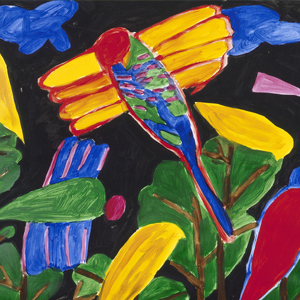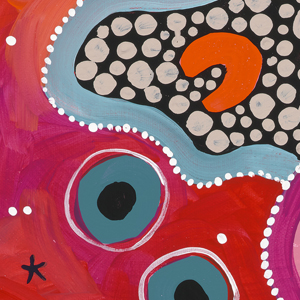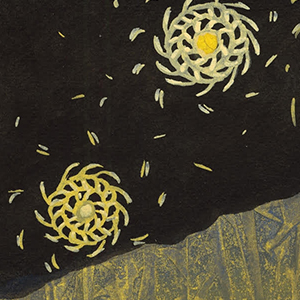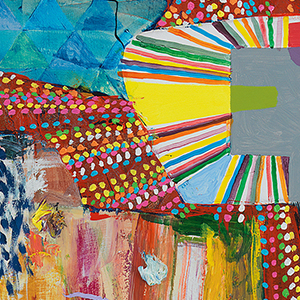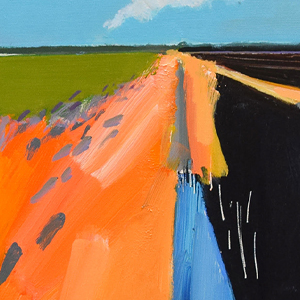
Interlude
Reflections on My Pursuit of the Good
Howard Gardner
Artwork: “Time Traveler” by Paul Alan Bennett © 2021
As I enter my ninth decade and reflect back, I am reminded of several years ago when my friends Bill Damon and Anne Colby asked me about my sense of purpose. My first response then was that I have always been curious, but that’s an individual trait and I knew they were asking about purpose beyond the self. On reflection, though, I said I hoped that I have been able to share the results of my curiosity with others—including, now, grandchildren as well as children. As I look back now, I can see many ways that my curiosity, though internally motivated, blossomed through collaborative relationships and still seems generative in new and sometimes surprising ways.
Friends & Colleagues Engaged in Good Work
In the fall of 1994, I was joined by Mihaly Csikszentmihalyi and Bill Damon at the Center for Advanced study in the Behavioral Sciences, a retreat abutting the campus of Stanford University in Palo Alto, California. By that time, Mihaly had made his name formulating the concept of “flow”—a psychological state in which skill and challenge are in balance—while Bill was a developmental psychologist, known for his work on children’s moral development and his interest in moral exemplars. I was known chiefly as the theorist of “multiple intelligences,” an idea controversial within psychology but embraced by a wide variety of educators.
The three of us already knew one another and had planned to create a joint project. We were all interested in whether people should be held responsible when their creativity was repurposed for nefarious ends. For example, Albert Einstein had illuminated the relationship between mass and energy—but could he, and should he, be held responsible for the development of atomic weapons? On a humbler level, if educators sought to stimulate creativity in students, to what extent should the educators also ensure that students’ creations were benign rather than malignant?
Armed with a research question and a modest grant obtained from the Hewlett Foundation—the only funder that considered our issue worthy of support—we decided to study admired leaders and practitioners of various professions. We assumed that such individuals would often be creative but also be concerned about the uses to which their creations were put. As it happens, we chose two professions that proved instructively different from one another: journalism and genetics. We asked informants to nominate individuals whom they admired for their accomplishments as well as the way(s) that they had achieved them. In each case, we (along with our research team) conducted open-ended interviews to discover which traits and behaviors characterize such exemplars.
After a while, we felt prepared to “go public” with our findings. In 2001, we published a book entitled Good Work. That book focused on the two elements that most predictably characterized our subjects: They were excellent at their work; and they carried out their work in an ethical way.
We went on to study respected professionals in seven other areas in addition to geneticists and journalists: doctors, lawyers, business executives, individuals in theater, professors (higher education), teachers (K–12), and individuals working in philanthropy. We soon came to realize that “good work” had not two but three essential elements, what we call the “triple helix”: the intertwining of excellence, ethics, and engagement. That is: people involved in good work like their work (at least most of the time); they look forward to going to work (at least most of the time); and they often achieve that state of flow that keeps them energized—a fourth ‘E,” if you will. This pursuit involved more than a decade of work, involving several dozen researchers, and culminating in ten books and many articles.
Different Paths in Pursuit of Good
While remaining close colleagues and friends, Mihaly, Bill and I proceeded thereafter along somewhat independent paths. Mihaly was a principal architect of the (now) world-famous movement of positive psychology. He established the Quality of Life Research Center at the Claremont Graduate University and focused on various facets of flow throughout the life cycle, including the crucial role of mentors in catalyzing good work. (Alas, he died in October 2021, at the age of 87.) At the Stanford Center on Adolescence, Bill studied moral exemplars. He developed the concept of purpose to such an extent that it now constitutes an entire field of study in the social sciences, with applications from schools to workplaces, be they professional, business, or artistic.
As it turned out, I was the only member of the trio who stayed put on his original campus. Having been a founding member of an organization called Project Zero (pz.harvard.edu), I remained at Harvard. With extraordinary colleagues, I continued efforts to understand, unravel, and eventually promote the nature and realization of good work.
(I sometimes mused about why, unlike Mihaly and Bill, who had relocated to California, I had stayed put—and I came up with an answer that, at any rate, satisfied me: I travel—but chiefly in my own mind. And having recently entered my ninth decade, and now avoiding airports, that’s still my principal mode of locomotion).
Our Good Work research group slowly evolved into what we now simply call “The Good Project.” Over more than two decades, we have carried out a significant number of initiatives. Most recently, colleagues at Project Zero have just launched a Center for Digital Thriving, much of it based on research originally carried out under the aegis of the Good Project. Our research group, including Katie Davis, Carrie James, and Emily Weinstein, sought to understand members of the “App Generation;” we pondered how it is important to devise and encourage activities that engage young people’s creative and critical faculties, helping youth become app-enabled—not simply app-dependent.
Other initiatives of the project during the last decade have included developing curricula for use in school: As developed by Lynn Barendsen, Shelby Clark, Kirsten McHugh, and Danny Mucinskas, The Good Work Toolkit contains games, exercises (e.g., a value sort) and curricular units—each designed to enhance the likelihood that the students will eventually become good workers—rather than compromised or even bad workers. The Toolkit is now organized around over a score of curricular pillars, which are being used—and adapted–in middle and secondary schools around the world. In the last few years, in collaboration with Wendy Fischman, we have created exercises and procedures that can lead to awareness of ethical issues among college students, who will soon enter the world of work. We are also participating actively in several studies and curricula focused on what it means to be a Good Citizen in a Democratic Society.
In itself, the Good Project should be regarded as a gigantic toolkit: it can and should be used (and adapted) by individuals and groups around the world. As the nature of work—and of play—changes—sometimes precipitously—we believe that the Toolkit can continue to be useful—even as it continues to evolve, sometimes in ways that we can’t anticipate.
Educating for Multiple Intelligences and the Good
In my long career, it’s been a privilege to launch a project with two valued—indeed invaluable—colleagues and to observe it evolve in so many ways—notably Bill Damon’s crucial work on a sense of purpose, as articulated in this publication. We have learned a tremendous amount, and we hope—indeed, we believe—that at least some of what we have learned has proved valuable to others.
Even though I have spent half of my life in research on the Good Project (and its various strands and branches), I am basically known as an educator. By far the work for which I am best known is the Theory of Multiple Intelligences (MI theory)—the claim that, rather than constituting a single entity (as suggested by the IQ test), human cognition is better thought of as featuring eight semi-autonomous computational processes—which I’ve dubbed the “Multiple Intelligences.”
Along with others, I have spent lots of time discussing, debating, (and even, at times, debunking) MI theory. But many, including me, have not always realized—and have not pondered—that an intelligence is essentially amoral. Linguistic intelligence can be used to write beautiful literary works (e.g. the German polymath, Johann Wolfgang von Goethe) but it also be used perniciously (e.g. the Nazi propagandist, Josef Goebbels). Interpersonal intelligence can be used to help individuals understand themselves (the sensible and sensitive therapist); but it also can be used to deceive others, mislead them, even torture them (the cult leader). Accordingly, it does not suffice to recognize, stimulate, and nurture our human intelligences. We—as educators, parents, citizens, scholars, and professionals—should reflect on our own ensemble of intelligences, note how we use them, and try as best we can to deploy them in benign ways.
Although my work with the Good Project is less known, it is an important addition for those who hope to foster intelligences for good.
Ever Curious
Even after a long life and career, in which I have had many opportunities, my mind is still active as I take walks, play the piano, or even simply rest. I have always spent a lot of my time alone with my mind, and I still do. These days I have been pondering two questions:
First, what does it mean to synthesize? Though I am the “MI man,” I have come to realize that MI does not explain satisfactorily how I carry out my own work. With respect to intelligences, I am a typical scholar—reasonably linguistic, reasonably logical, with some musical and naturalist intelligence thrown in as bonuses. If I stand out from my fellow social scientists in any way, it’s because I am a skilled synthesizer—and most of my sustained writings are syntheses. But how to understand synthesis as carried out by a scholar/scientist/humanist has proved challenging. And that’s what I have been working on of late.
The second question I’ve been pondering is what we should we be doing in our educational systems in the U.S. and around the world. I could easily write 2000, perhaps 20,000 words on that topic. But for now, let me simply say that I think that the fate of the planet, of the natural world, and of our powerful but increasingly beleaguered species deserve to take increasingly large amounts of our scholastic space.
In the summer of 1965, I entered the field of educational research—courtesy of psychologist-turned-educator Jerome Bruner, who had created an effective social studies curriculum for middle school. The curriculum centered on three questions: (1) What is human about human beings?; (2) How did they get that way?; (3) How can they be made more so? I’d like my five grandchildren—along with many millions of other young people around the world—to have the opportunity to ponder those questions, come up with cogent answers, and act constructively upon them. The survival of the planet may well depend on good workers and good work.
Our current work is generously funded by the Kern Family Foundation, The John Templeton Foundation, and the Saul Zaentz Charitable Foundation.
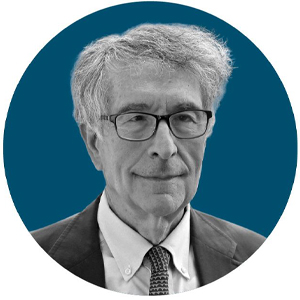
Howard Gardner is the John H. and Elisabeth A. Hobbs Research Professor of Cognition and Education at the Harvard Graduate School of Education. He was a founding member of Harvard Project Zero in 1967 and held leadership roles at that research center from 1972 to 2023. Since 1995, he has been the co-director of The Good Project.
Spring 2024
Part I: Pursuing Virtue
L. Gregory Jones
Sabrina B. Little
Kelli Reagan Hickey
Jesse S. Summers
Interlude: Purposeful Pursuits
Howard Gardner
Part II: Pursuing Vocation
Clayton Spencer
James Coleman, Jr.
James and Margaret Plews-Ogan
Carolyn Woo
MORE





